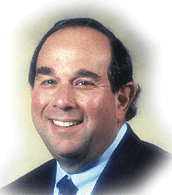

 |
 |
 David J. Katz, MD
|
Microwaves offer Relief for Enlarged Prostate ProblemsNon-cancerous enlargement of the prostate (known in medical circles as Benign Prostatic Hyperplasia or BPH) is one of the most common afflictions known to man. Over the centuries many treatments have evolved. During the Middle Ages any surgical treatment almost invariably resulted in death. In the modern era of medicine, the removal of the enlarged prostate became feasible. First, through an incision in the lower abdomen; and then beginning in the 1930s, through a telescopic instrument passed into the bladder through the penis. Over the next 70 years, transurethral resection of the prostate (TURP, called the ream job), became the standard treatment for enlarged non-cancerous prostate. In 2004, the TURP is an effective procedure performed with a one-night hospital stay and a very high success rate in over 150,000 men each year in the United States. While there remains a lower risk of bleeding, urinary incontinence and erectile dysfunction after TURP, many men would understandably like to avoid the risks and the six-week recuperation from this surgery. During the 1990’s, medications were developed that allow prostate enlargement to be treated with two types of pills taken each day. One medication works by relaxing the muscular part of the prostate and the second actually causes slight shrinkage of the gland. While most patients get some improvement from these medications, there have been some bothersome side effects (lightheadedness, fatigue, erectile problems) and the cost of the pills can range from $50 to $120 per month. As years go by, most patients find the pills no longer work as well and the long-term cost continues to mount. Advantages of TUMT (transurethral microwave thermotherapy)
During the 1980’s, researchers began to perfect the application of microwave energy to treat the enlarged prostate. Initially the systems were cumbersome. Today, an office-based microwave treatment known as transurethral microwave thermotherapy (TUMT) is available. TUMT is performed in the urologist’s office, and no general or spinal anesthesia is required. Patients are given oral sedation and a local anesthetic fluid is placed in the bladder. The entire treatment takes less than one hour and patients go home with a catheter in their bladder for three to seven days. The results of TUMT are gradual in onset. Since no tissue is removed, it may take three to six months to gain maximum effectiveness. In the long run, TUMT appears to give much greater symptom relief in most cases than medications. Because of the excellent results, the avoidance of the risks of anesthesia, and the cost associated with the hospital stay, TUMT is now approved by Medicare and all insurance companies. The out-of-pocket cost to the Medicare patient is approximately the same as a one-year supply of the medications to treat BPH. Ask your doctor about transurethral microwave thermotherapy. TUMT is an extremely safe and cost-effective means to treat the age-old problems associated with BPH. Microwave thermotherapy enables urologists to offer patients state-of-the-art treatment for prostatic enlargement in an office-based setting. If you would like more information on transurethral microwave thermotherapy please contact Dr. David Katz at Western Wisconsin Urology » 715-835-6548. www.eauclaireurology.com |
|